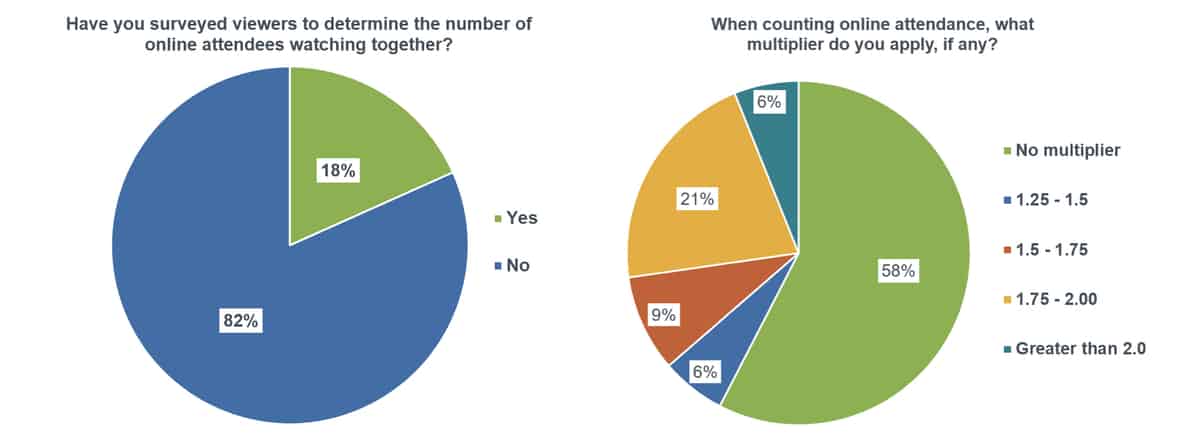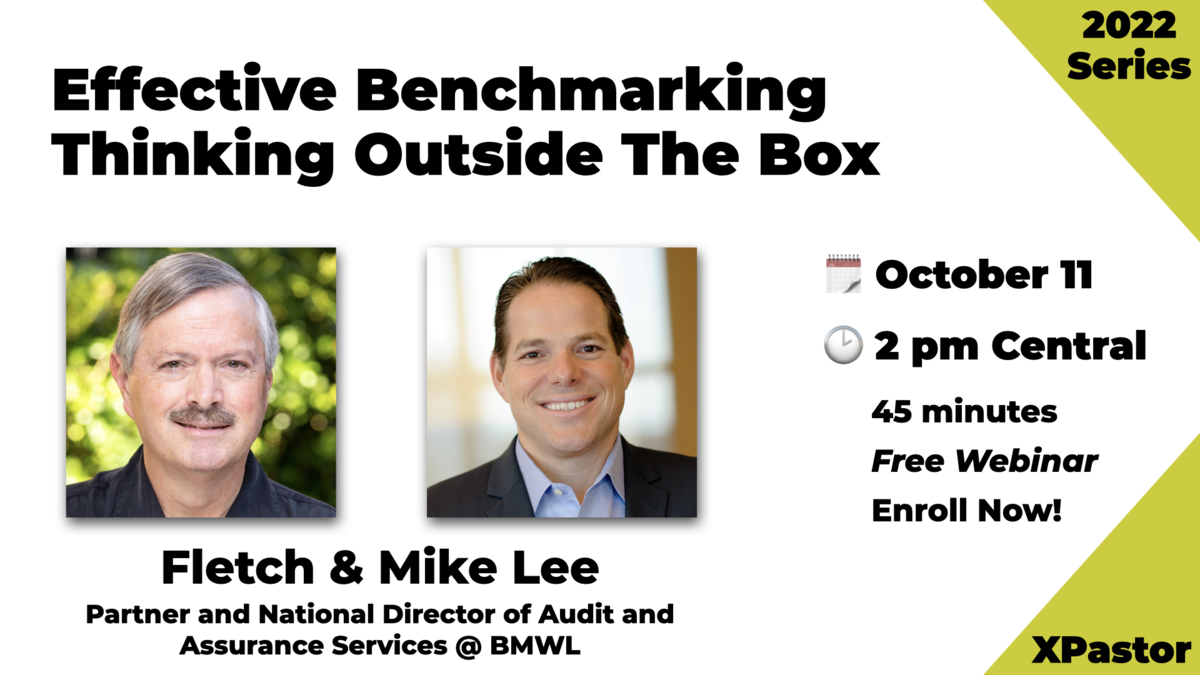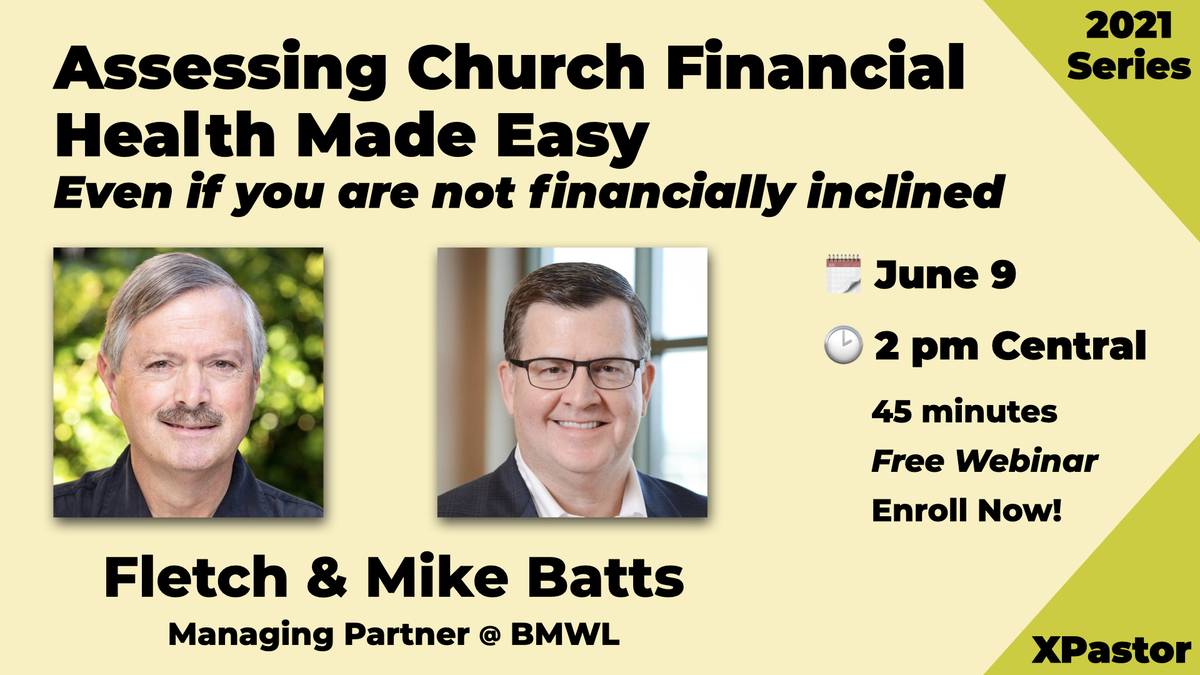During the CapinCrouse 2021 National Church Virtual Seminar held on February 24 and 25, 2021, I had the opportunity to lead a workshop in which leaders discussed what the church may look like after COVID-19. We wrestled with questions such as:
- Will previous in-person attendees return or stay virtual?
- What about the unchurched reached during the pandemic—will they attend a physical church?
- How will back-office operations look different in this new remote work environment?
All we know with certainty is that many things will be different after COVID-19.
The goal of this discussion was for the group to gain insight into how various churches are approaching pandemic ministry activities. The discussion also led to practical insights churches can use in a post-pandemic operating strategy.
Survey of Workshop Attendees
Before the workshop, we asked the participants about their experience with certain indicators. This informal survey was not intended to be a statistically valid sample, but rather to provide insight into the participants’ experiences during COVID-19. The number of responses to each question varied from 37 to 72.
This article highlights the results of these survey questions and key takeaways from the group discussion.
Cash Reserves and Resources
Our survey covered the following questions about cash reserves:
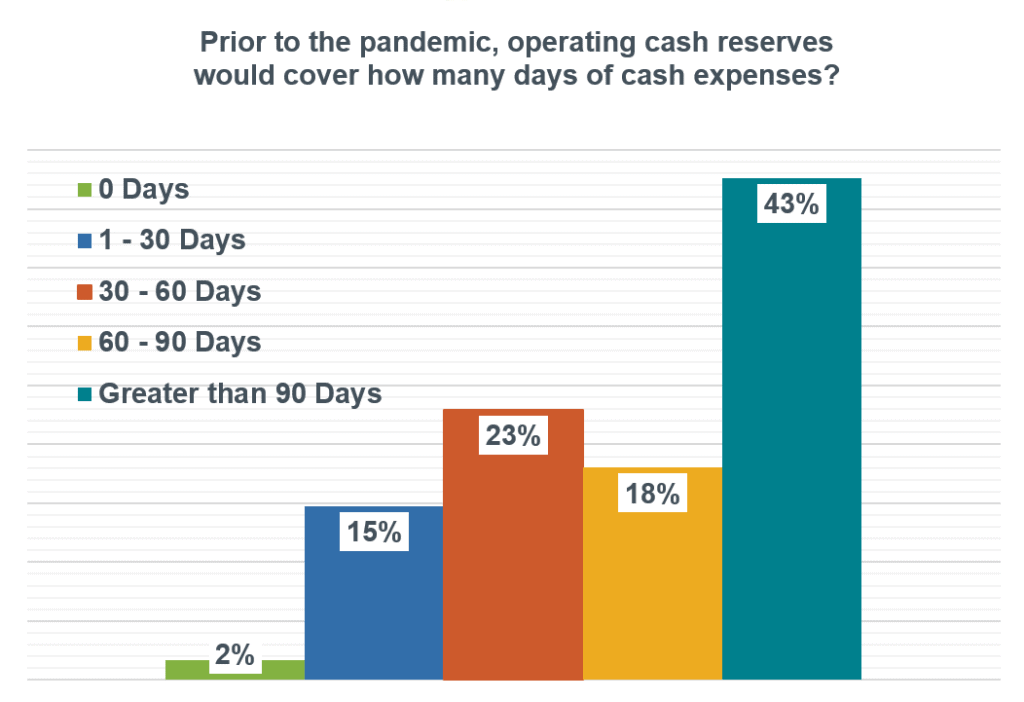
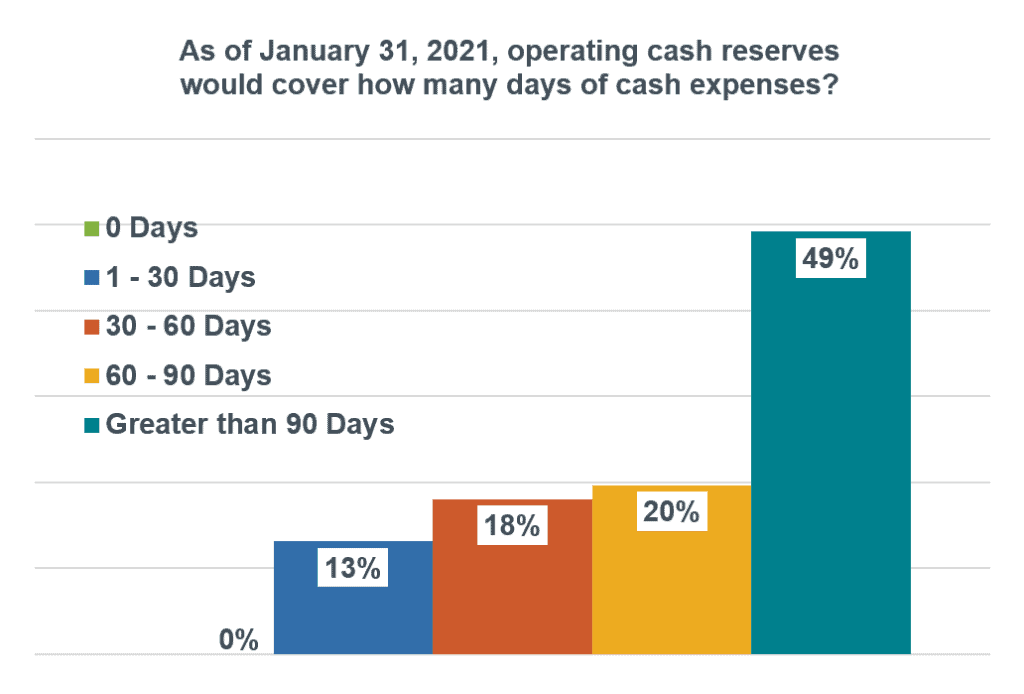
The data shows that churches had increased operating reserves from the beginning of the pandemic to the survey date, which is not surprising.
Budgeting and Forecasting
The pandemic also raised new considerations for budgeting and forecasting, including how to approach personnel costs.
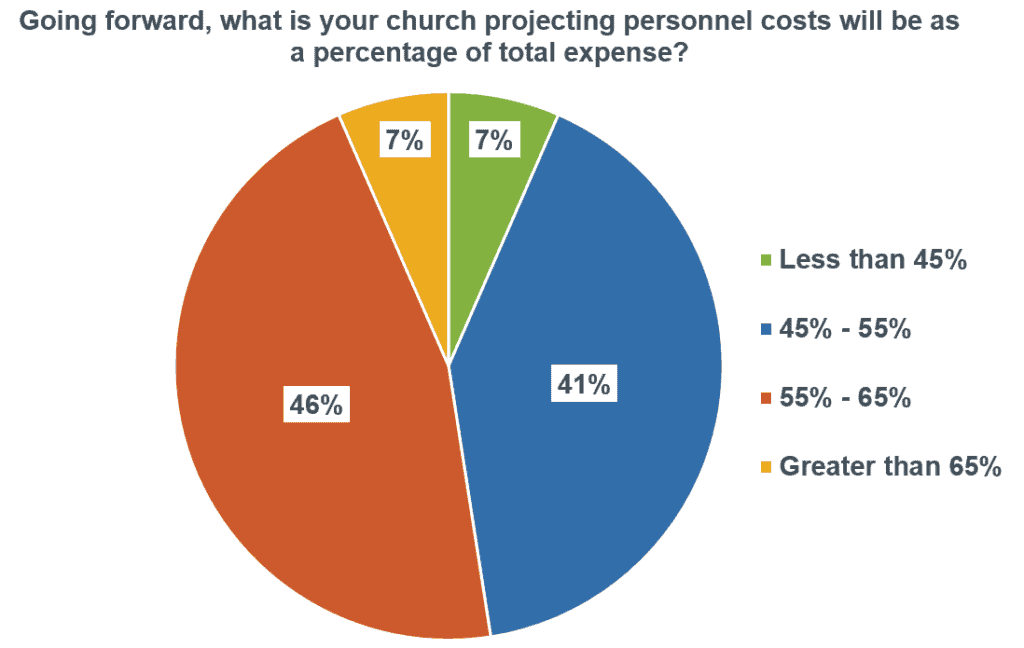
The workshop participants stated that now that they are returning to live, in-person services, their employees face a higher workload than before the pandemic. While salaries and benefits typically ranged between 40% to 55% of expenses at churches before the pandemic, feedback from our participants indicates that this percentage may increase because of new personnel focusing exclusively or primarily on the “digital campus.”
When asked how they are forecasting revenues in the current environment, the participants said they are focusing on the number of giving units versus attendees because this has been a more reliable number since the pandemic began. They are now establishing goals based on changes in giving units, specifically:
- The number of giving units at the beginning of the year
- How many new giving units they anticipate adding
- How many giving units they are budgeting to lapse
- The total number of giving units they project at the end of the year
The participants said they are looking at historical giving per giving unit, if those numbers were tracked. Both of these factors are key in budgeting revenues. They also noted that they will be comparing against much shorter historical periods than those they used before the pandemic.
One participant stated that that before the pandemic, he discovered giving was lower than budgeted. Further review disclosed that a large number of giving units had stopped giving in the current fiscal year, and this number increased after the start of the pandemic. The church responded by establishing a team to reach out to those giving units. Rather than focusing on giving, the team used the outreach to check in on these givers and pray with them over any concerns. As a result, about 70% began giving again within a couple of months.
Our workshop participants also said they were being proactive in stewardship ministries to encourage and develop regular giving among new giving units. Post-pandemic benchmarks for giving and engagement focus on increases in the number of giving units and the amount given by each. The recommended threshold for a giving unit is $250, which is what is used in the CapinCrouse Church Financial Health Index™ .
Online Engagement
Our pre-workshop survey also asked about online engagement.
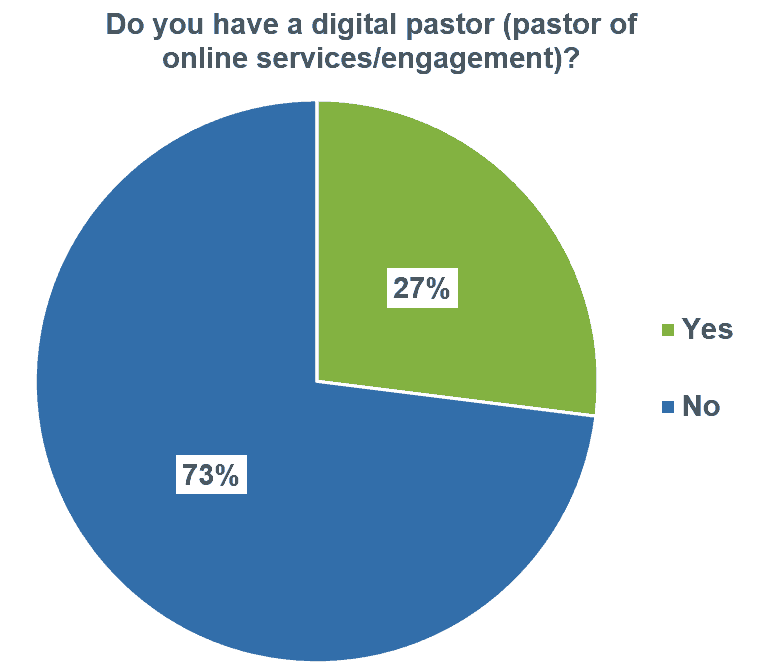
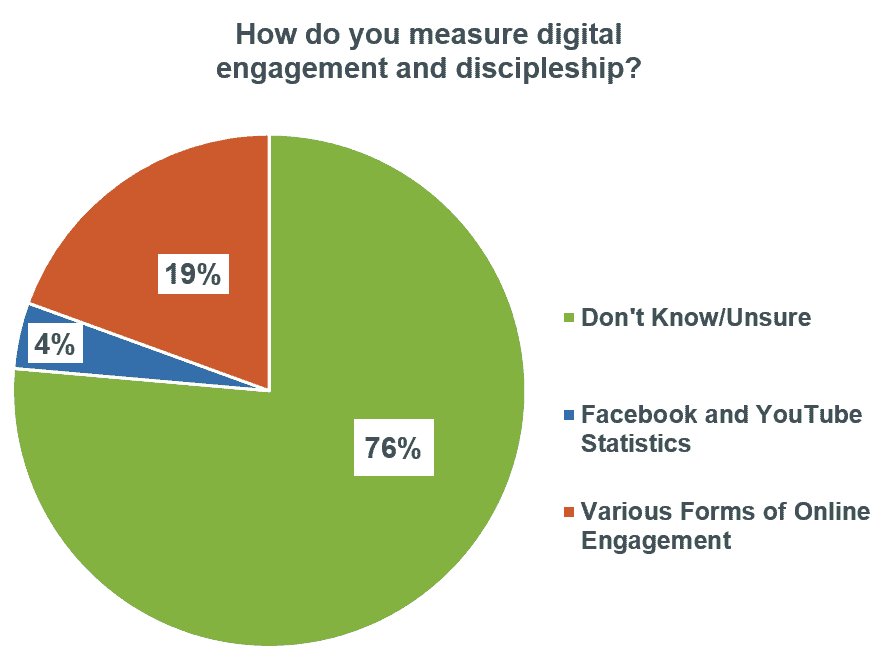
What surprised me most about these online engagement responses is that 76% either didn’t know or are unsure how to measure it. During the workshop, I asked the participants about tactics their churches are using to encourage online attendees to do more than just watch the service and log off afterward.
They shared the following successful practices:
- Encouraging people to join a chat room for prayer
- Having designated hosts in the chat room to interact with attendees
- Creating a digital program to help new families join the church (similar to in-person membership classes)
- Developing small groups that meet online with a digital curriculum
- Streaming classes to help members learn how to do a baptism in their pool or yard, then playing submitted videos of these at-home baptisms during the weekend services
- Having staff call everyone with a giving history one to two times over the past year
We also discussed strategies for meaningful engagement with people who are unable or choose not to return to in-person services after the pandemic but may continue to attend online.
One church hired several employees to develop a digital discipleship program that includes creating a database of people who join (by campus), connecting with them and sending weekly reminders about events, and tracking when they become involved in a small group or other activities. And a smaller, one-hour weekday prayer service that was already in place before the start of COVID-19 has worked well during the pandemic, especially as the church has started returning to in-person services.
Another church hired a director of engagement to assess attendance over the last year, including reviewing giving and determining how to best reach out and reengage attendees. Among church leaders in the workshop, there was a consensus that analyzing giving is a good way to determine engagement. Both Generis and MortarStone offer software that provides comprehensive analytics and identifies trends in donors who have stopped giving.
Attendance Trends
Our survey looked at how churches are approaching a return to in-person services, and what attendance might look like once all restrictions are lifted.
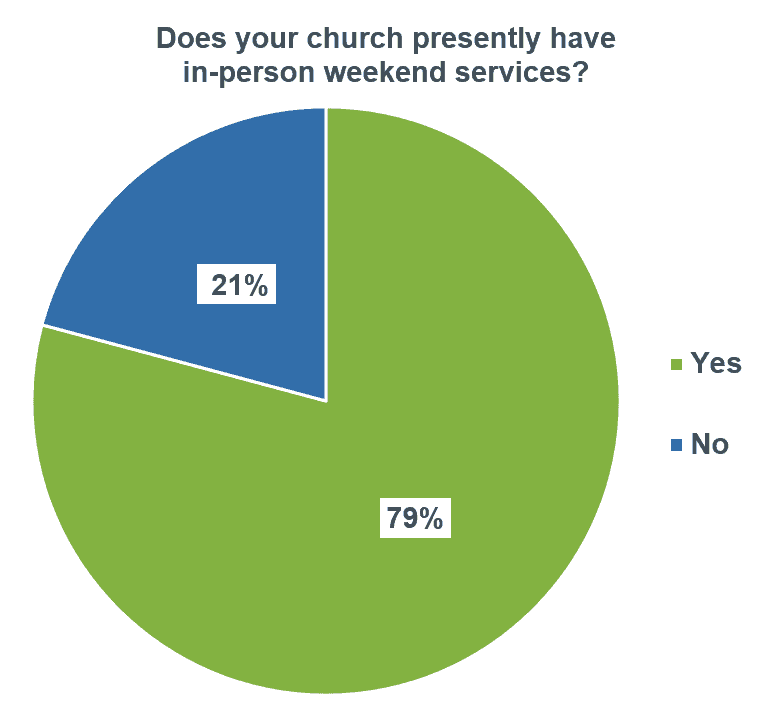
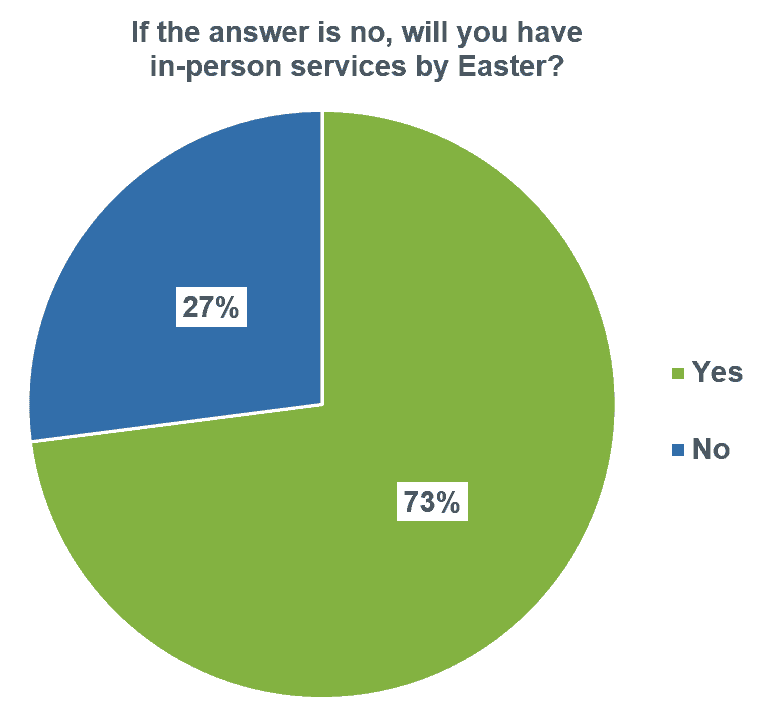
A majority of the respondents planned to have live services by Easter. But nearly all of the respondents believed that less than 90% of their pre-pandemic attendees will return to in-person services.
We also looked at measuring online attendance, which can be challenging.
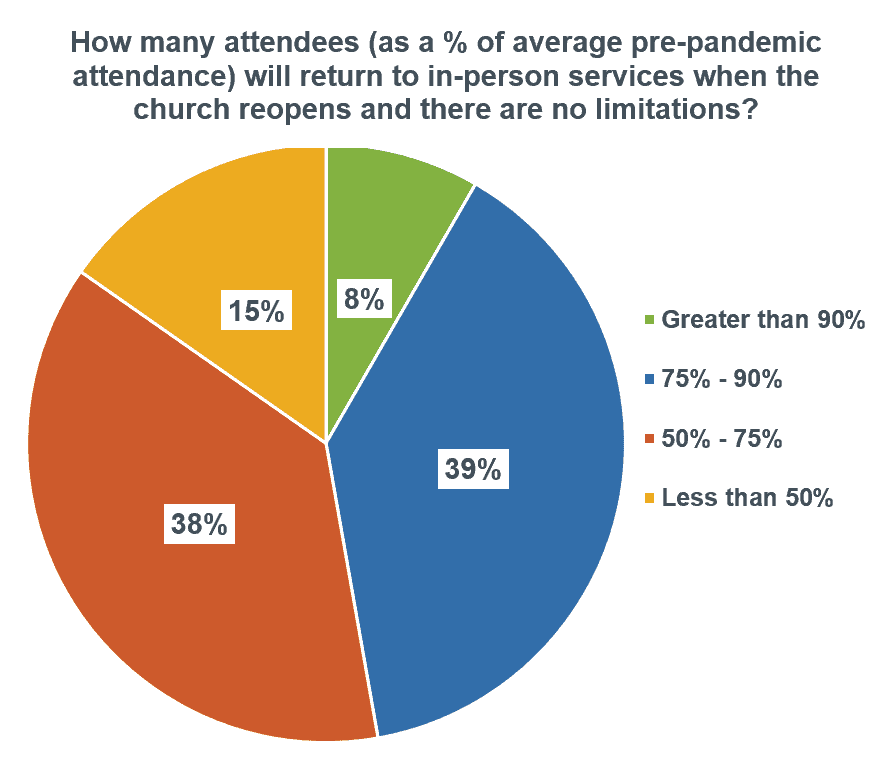
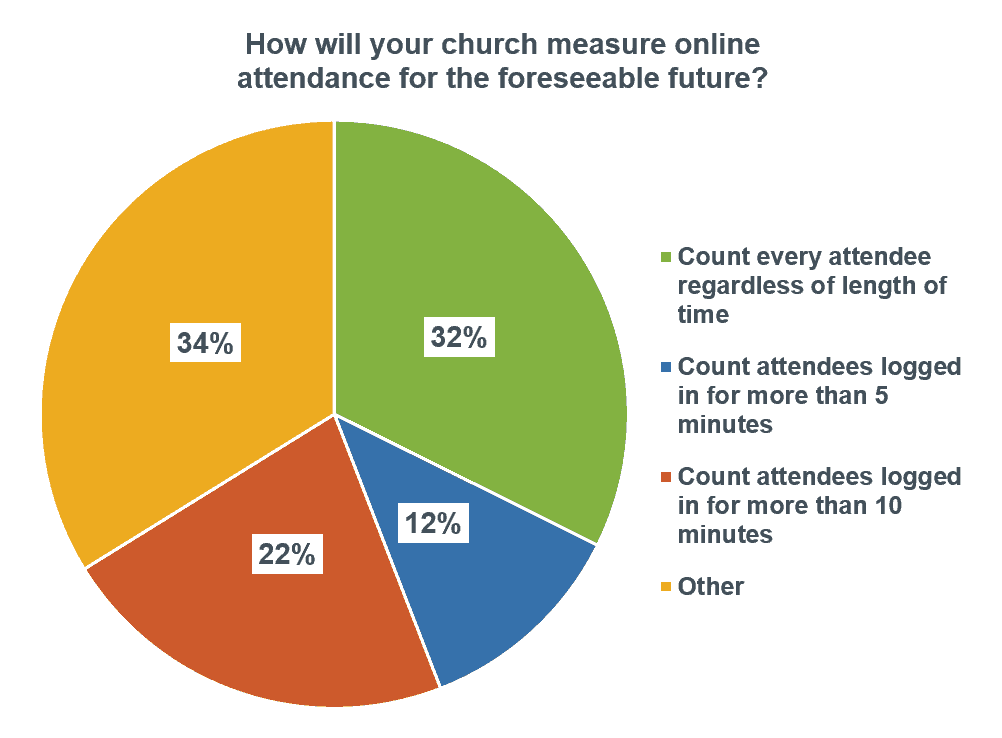
One workshop participant said his church looks at the number of givers each week when estimating attendees because there is a general assumption that people who are giving are attending the service. He also noted that the engagement time for videos posted on the church’s Facebook page is substantially less than videos watched on the church’s website, so the church excludes Facebook views when counting attendance.
Our pre-worship survey also revealed that more than half (58%) of the respondents are not applying a multiplier to online attendees to estimate total attendance. The discussion during the workshop further clarified that multipliers vary between congregations and across the country.
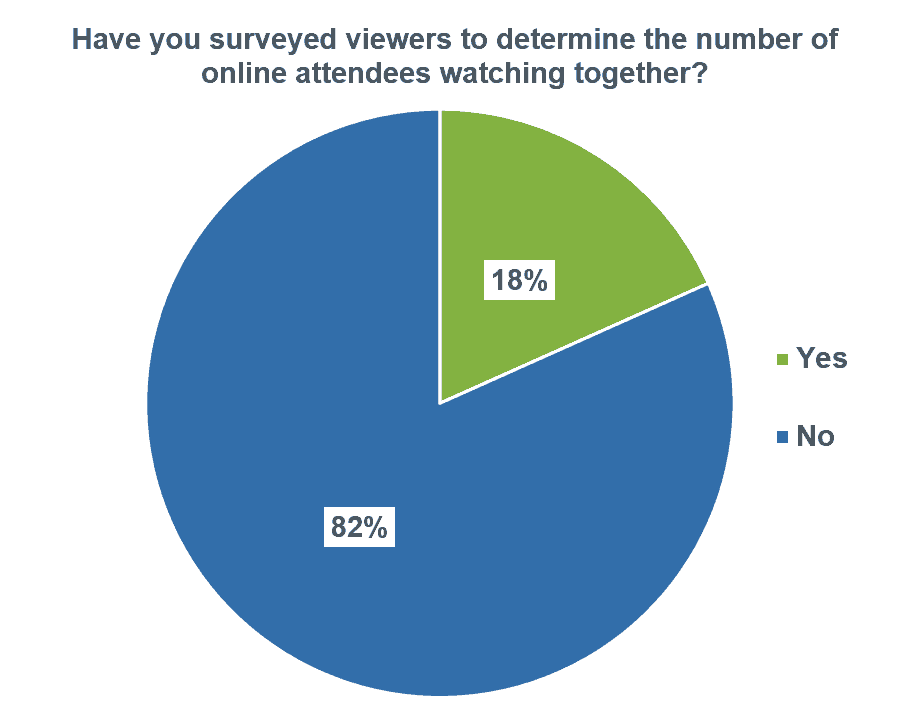
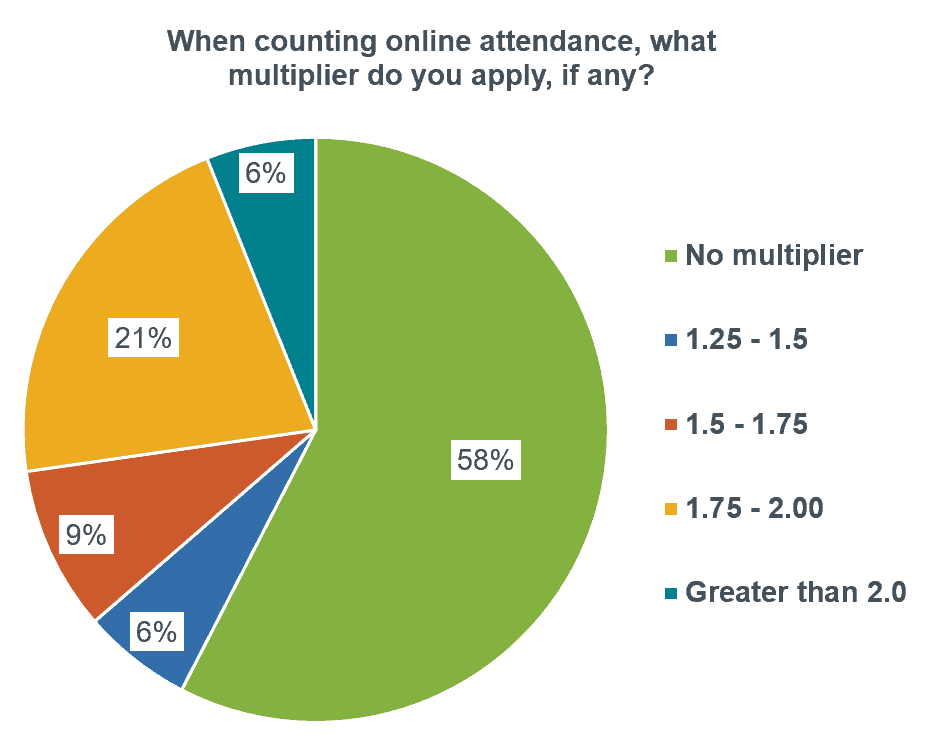
You can learn more about key factors to consider when measuring online attendance in this Facebook video.
Congregation Expectations on How to Be Served
From contactless pickup to online shopping and DoorDash, people now expect different types and levels of service, and they will bring those same expectations back to church.
During the workshop, the group discussed the expectations they believe their congregations will have after the pandemic. One participant, whose church has gradually started holding live services again, said most attendees were just happy to be back together. Other participants noted that while they don’t anticipate offering a different type of service, they do feel there is a general expectation to hold a shorter service, especially for the online community.
The group also said they expect attendees to want any in-person church events after the pandemic to include social distancing, face masks, and other precautions.
Remote Working Arrangements and Internal Controls
Remote work is another important consideration, with 45% of our survey respondents reporting that they expect some employees to continue to be primarily or exclusively remote.
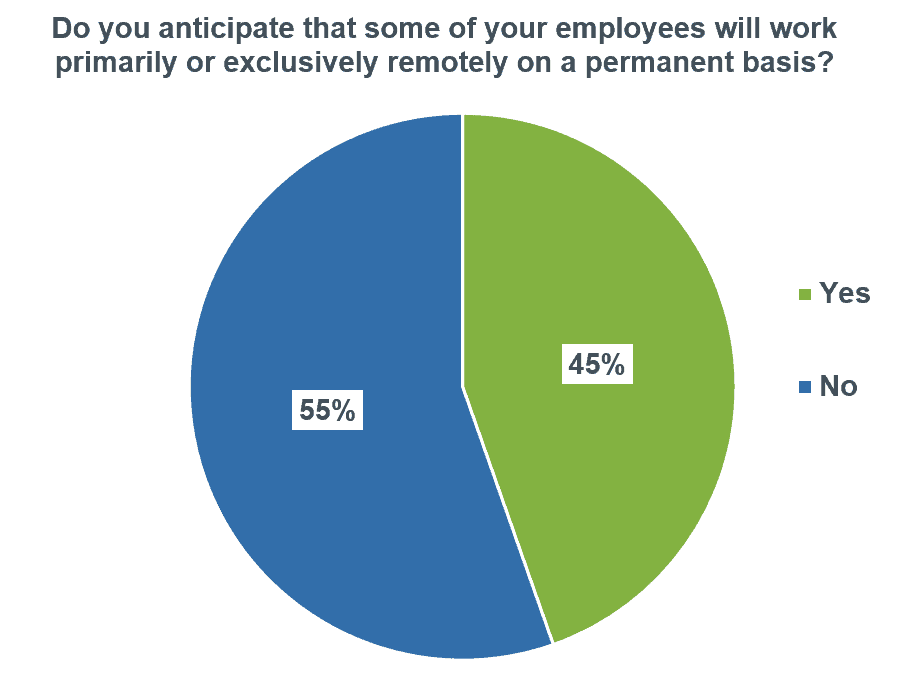
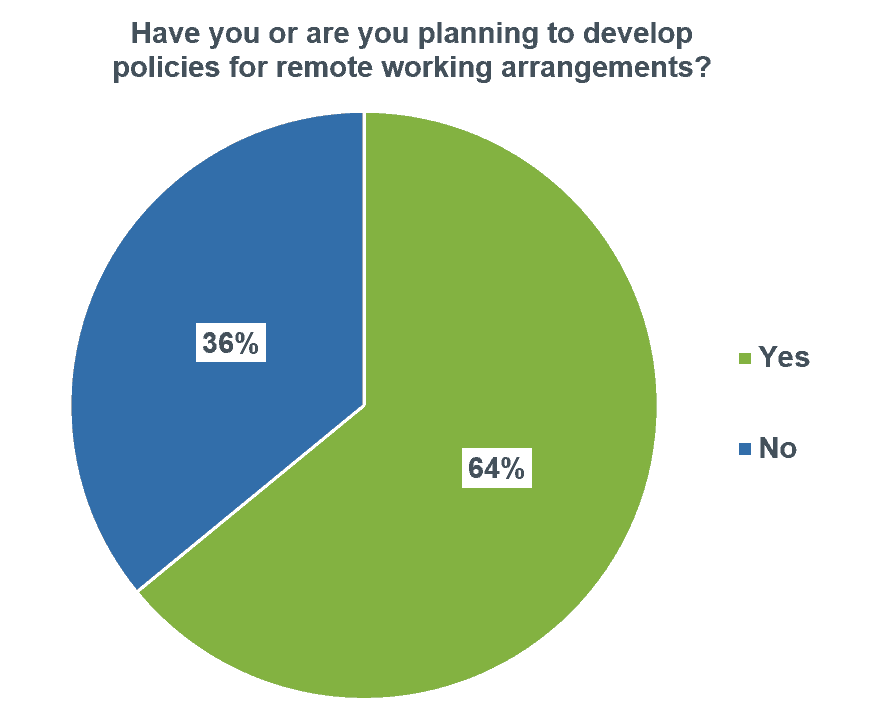
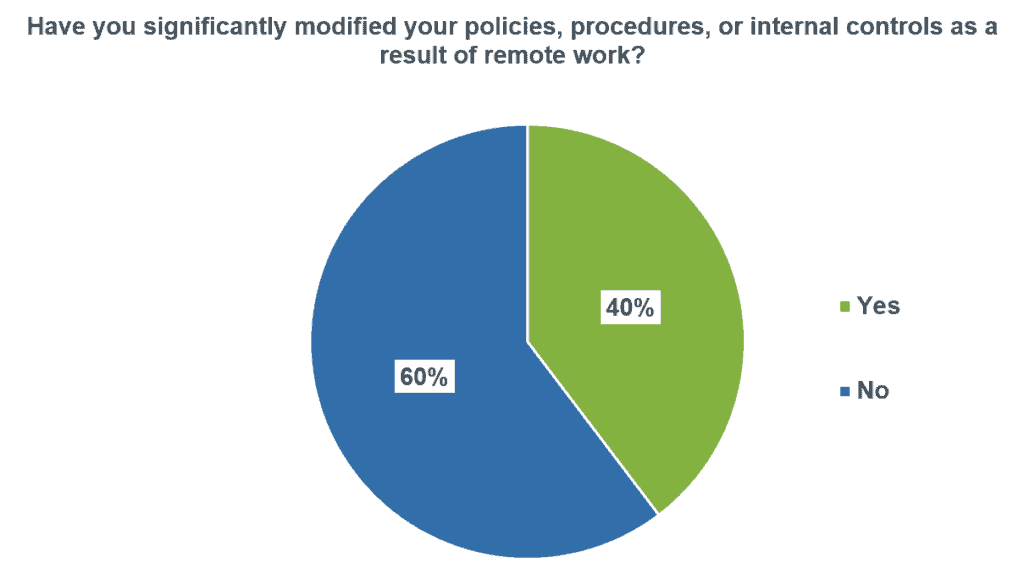
Overall, most participants said their churches are providing laptops to remote employees. It’s important to consider that using personal devices for work purposes can create additional exposure and security risks that must be addressed.
Our Facebook video on Cybersecurity Risks in a Remote Work Environment includes additional security considerations for remote work.
Communications
We also asked about the communications policies churches have in place.
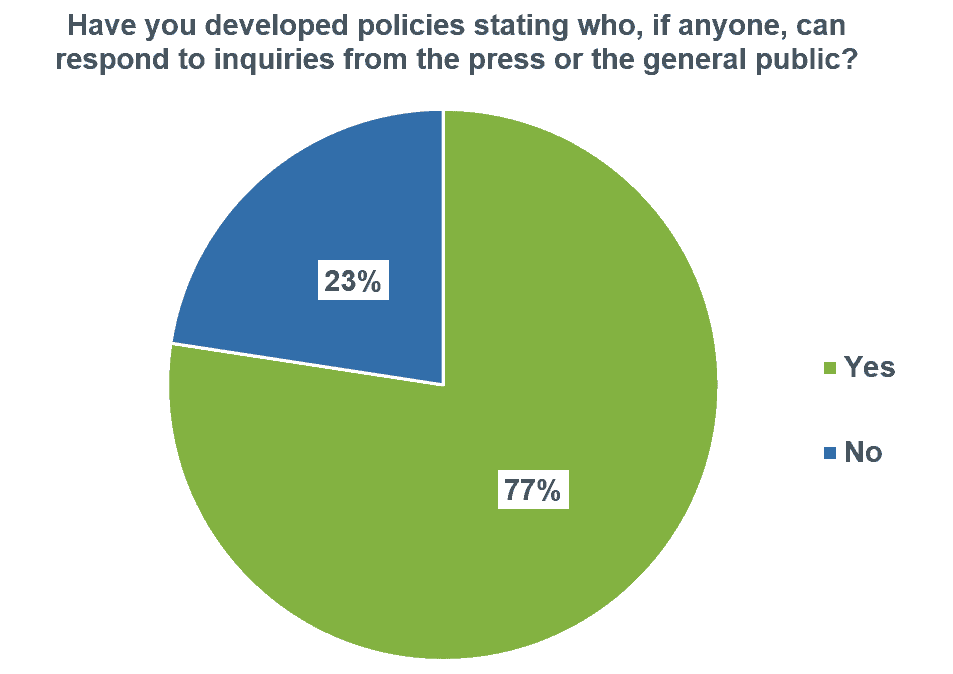
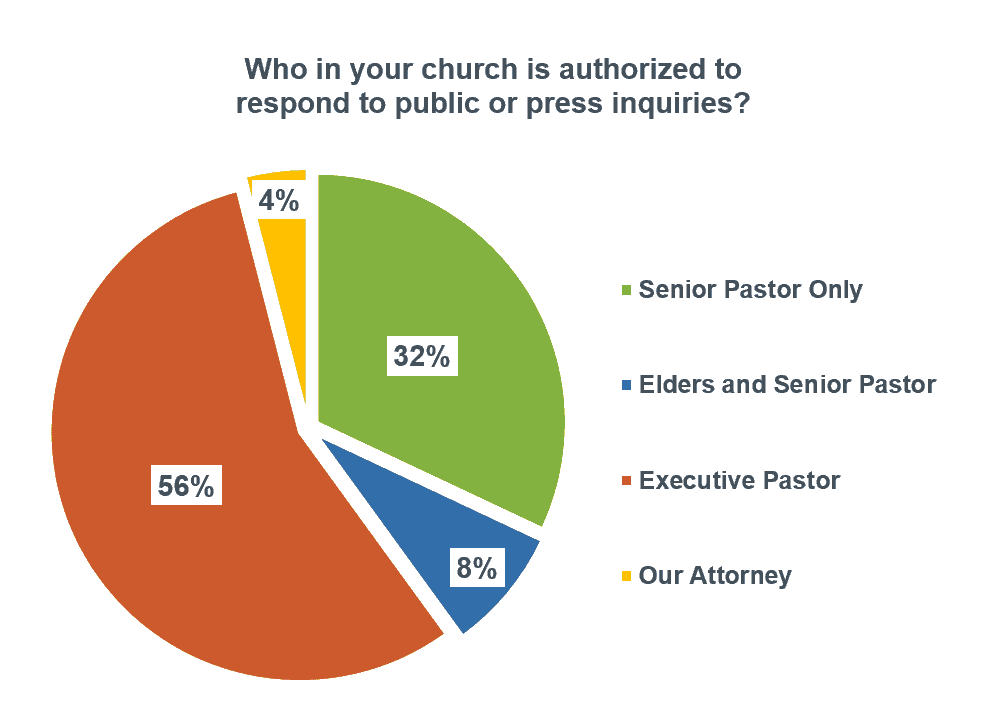
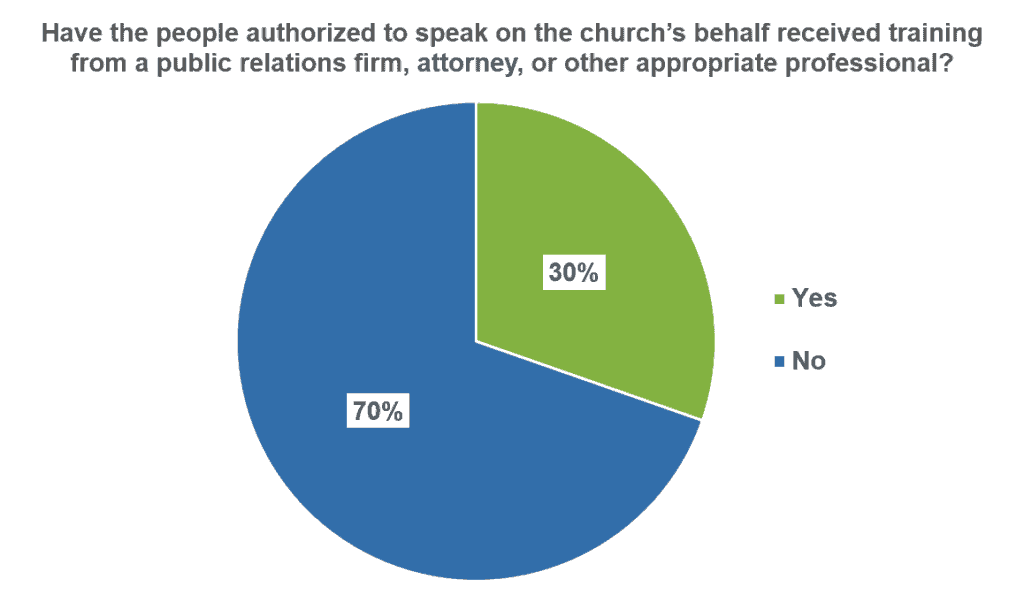
The majority of our survey respondents (77%) have policies for who can respond to media inquiries, with 88% designating the senior or executive pastor for this role. Choosing a spokesperson in advance will help your church be prepared if issues arise.
However, 70% of the survey respondents said the designated person had not received training from a public relations firm, attorney, or similar professional.
Attorney Steven Goodspeed, Founding Shareholder of Middlebrook | Goodspeed, addressed this topic during his Legal Update session at the CapinCrouse 2021 National Church Virtual Seminar. He noted that:
- It is important for churches to identify a media spokesperson in advance of any crisis, instead of waiting until an issue arises
- This individual should have appropriate training and be knowledgeable about:
- When to seek the advice of an experienced consultant, such as an attorney
- How to craft effective media statements
Moving Forward
The effects of COVID-19 will remain long after the pandemic ends. While some of the resulting changes are challenging, many offer an opportunity to identify new approaches and strengthen existing processes and policies.
We hope you can use the insights shared here to spark your own discussions about these issues and how your church will respond as the pandemic continues to change our reality. Strategic thinking and careful planning can help your church create a solid path forward.

